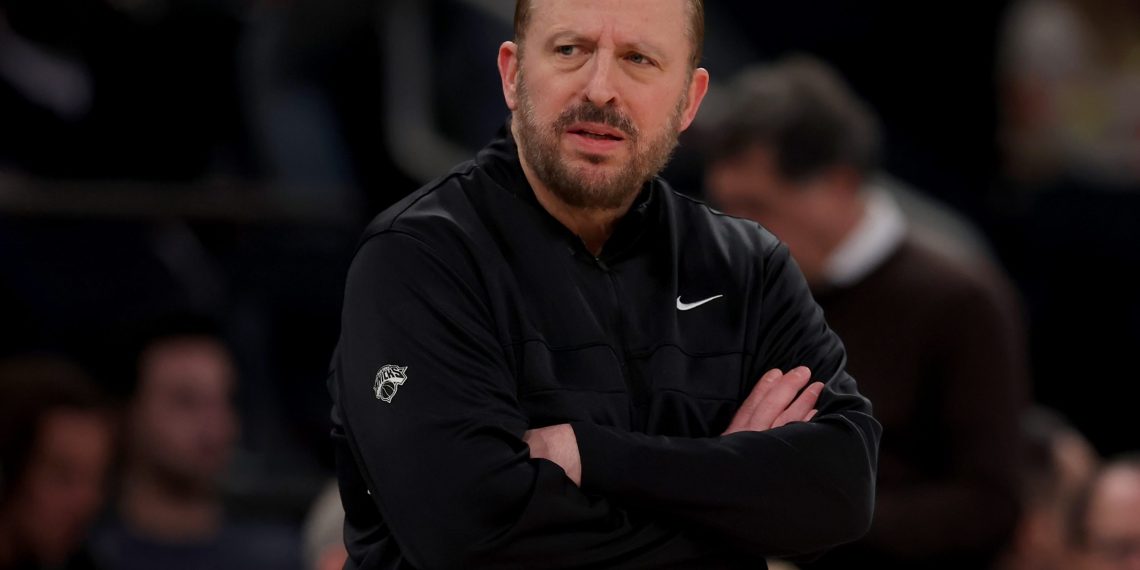Unlocking the NBA’s Strategic Edge: Tom Thibodeau Leads the Charge in Coaches’ Challenge Tactics
Since the inception of the NBA challenge rule in 2019, coaches have been navigating the complex terrain of utilizing this strategic tool effectively. Initially, success rates hovered at a modest 44 percent, but a remarkable evolution has seen this figure surge to an impressive 61 percent by February 23. Coaches have honed their approach, refining not just when to challenge but also how to access replays swiftly for informed decisions. However, the landscape remains diverse, revealing a spectrum of proficiency and frequency among coaches in deploying challenges. The intricacies of this decision-making process extend far beyond what meets the eye, demanding a deeper understanding of the game’s nuances.
Crafting a Winning Strategy: Inside the NBA’s Coaches’ Challenge Dynamics
Within the realm of NBA coaching, a select few stand out for their mastery of challenges, none more so than Tom Thibodeau of the New York Knicks. With an exceptional success rate of 79.4 percent, Thibodeau leads the league in leveraging challenges to his advantage. While other coaches may have overturned more plays, such as Jordi Fernandez of the Brooklyn Nets, Will Hardy of the Utah Jazz, and Chris Finch of the Minnesota Timberwolves, Thibodeau’s precision sets him apart. Conversely, figures like Erik Spoelstra, who holds a more conservative approach towards challenges, offer a contrasting perspective on the strategic landscape. The varying approaches among coaches underscore the depth of decision-making involved in utilizing challenges effectively.
Navigating the Challenge Terrain: A Closer Look at Coaches’ Success Rates
The NBA’s coaching fraternity presents a diverse tapestry of challenge success rates, shedding light on the strategic acumen of each individual. Data sourced from NBA Official as of February 20 provides a comprehensive ranking based on success rates, offering a glimpse into the league-wide landscape of challenge proficiency. The disparity in success rates among coaches underscores the unique blend of intuition, analysis, and risk assessment that underpins the challenge strategy in the NBA.
Strategic Calculus: The Time-sensitive Nature of Challenge Issuance
From the outside looking in, the decision to challenge a call may seem straightforward, but the reality facing coaches is far more complex. The pressure to make split-second decisions in the absence of natural timeouts creates a high-stakes scenario, demanding rapid assessments of replay footage. Coaches must navigate a narrow window of opportunity, often relying on designated staff members to provide real-time feedback on whether to challenge a call. The mechanics of issuing challenges unveil a dynamic interplay of time constraints, strategic considerations, and collaborative decision-making within coaching staffs.
Decoding the Challenge Matrix: Factors Influencing Coaches’ Decisions
The strategic calculus behind issuing challenges involves a multifaceted evaluation process, encompassing player feedback, call type, and game context. Coaches must weigh the input of players, assess the potential impact of a successful challenge, and factor in the statistical probabilities associated with different types of calls. The evolution of challenge strategies has seen a shift towards maximizing impact plays while minimizing low-leverage challenges, reflecting a nuanced understanding of game dynamics and strategic priorities.
The Unseen Hand: Unveiling the Role of Assistants in Challenge Success
While head coaches often bear the brunt of scrutiny in challenge decisions, the unsung heroes behind successful challenges are often the unheralded assistants and video coordinators working behind the scenes. Their meticulous analysis of replay footage, timely feedback, and strategic insights play a pivotal role in shaping the outcome of challenges. The collaborative synergy between head coaches and support staff highlights the importance of teamwork, trust, and expertise in navigating the high-stakes landscape of NBA challenges.
In conclusion, the strategic evolution of coaches’ challenge tactics in the NBA underscores the depth of decision-making, collaboration, and expertise that define the modern coaching landscape. From Tom Thibodeau’s precision to the intricate dynamics of challenge issuance, the strategic chess match unfolding on the sidelines adds a layer of intrigue and complexity to the game. As coaches continue to refine their approach, the strategic edge gained through effective challenge utilization remains a crucial factor in shaping the outcome of games and highlighting the strategic brilliance of coaching minds in the NBA.









